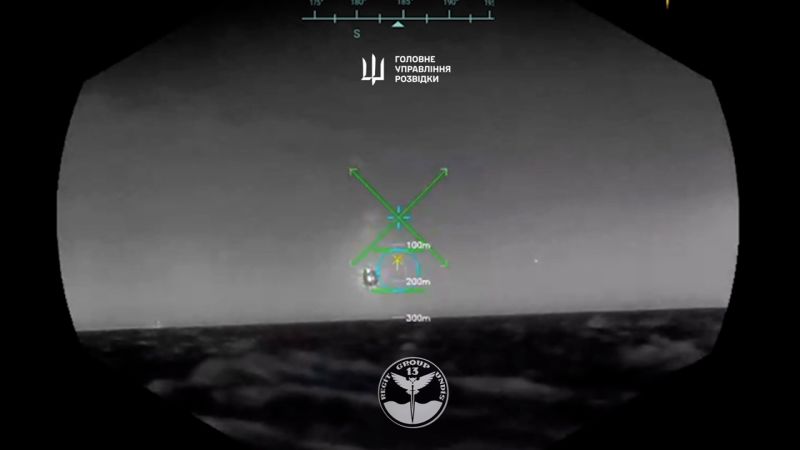Editor’s Note: A new episode of “The Whole Story: “Saving Venice,” a city threatened by rising sea levels and the millions of tourists desperate to visit while they still can, airs Sunday, May 11 at 8pm ET/PT on CNN.
Venice, Italy
CNN
—
It’s the “floating city” but also the sinking city. In the past century, Venice has subsided by around 25 centimeters, or nearly 10 inches.
Meanwhile, the average sea level in Venice has risen nearly a foot since 1900.
It’s a tortuous pairing that means one thing: Not just regular flooding, but an inexorable slump of this most beloved of cities into the watery depths of its famous lagoon.
For visitors, its precarious status is part of the attraction of Venice — a need to visit now before it’s too late, a symbol that humanity cannot win against the power of nature.
For Venetians, the city’s island location has for centuries provided safety against invasion, but also challenges. Tides have got ever higher and more frequent as the climate crisis intensifies. And the city sinks around two millimeters a year due to regular subsidence.
But what if you could just… raise the city? It sounds like science fiction. In fact it’s the idea of a highly respected engineer who thinks it could be the key to saving Venice.
While the Italian government is currently spending millions of euros each year raising flood barriers to block exceptionally high tides from entering the lagoon, Pietro Teatini, associate professor in hydrology and hydraulic engineering at the nearby University of Padua, says that pumping water into the earth deep below the city would raise the seabed on which it sits, pushing Venice skyward.
Would that rise the city up above the waves? Or could it go terribly wrong, causing buildings to collapse in Hollywood-style scenes?
Teatini says that his plan would give Venice a grace period of around 50 years, working in tandem with the current flood barriers, enabling the authorities to come up with a permanent, “drastic” solution. He believes that his system could raise the city by 30 centimeters, or nearly 12 inches.
The clock is ticking.
Engineering feats to preserve Venice are nothing new.
During the city’s 1,000-year history as a republic, officials of La Serenissima — “the most serene” state, as it was known — were constantly rerouting rivers, digging new canals and rechanneling the waters of the lagoon to serve the city best.
In the 20th century, however, things started to go wrong. During the 1960s and 1970s, groundwater was pumped from the industrial area of Marghera, on the mainland facing into the lagoon. Big mistake — it caused the entire area to sink. From 1950 to 1970, Venice’s precious city center subsided nearly five inches.
Today, the city’s main protection against high tides is the MOSE set of flood barriers that rises from the seabed to cut off the lagoon from the Adriatic during exceptionally high tides.
The system, which was first trialed in 2020, was planned in the 1980s, when it was anticipated that the barriers would have to be raised around five times a year.
But with climate change contributing to rising tides, it’s now a very different picture. In the past 20 years, tides in the lagoon have exceeded 110 centimeters — essentially the level at which it can cause disastrous, rather than “regular” flooding to the city — more than 150 times.
Rather than the barriers being raised five times a year, the MOSE has already operated around 100 times since it debuted in October 2020. Yet the barriers are still in a test phase and not officially operational. So far the project is estimated to have cost around six billion euros.
Meanwhile, each time the barriers are raised, the lagoon is effectively closed off — which not only affects traffic coming into Venice (Italy’s second busiest port, and the fifth in the Mediterranean), but prevents the lagoon’s natural action of flushing itself out with the tides. The more the barriers are raised, the more the ecosystem risks changing.
And still Venice continues to sink at a rate of around two millimeters each year, while tide levels rise by around five millimeters per year.
Enter Teatini with his project to give Venice a couple of decades of breathing space.
By raising the level of the city by 30 centimeters (just under 12 inches), he believes that he could gift Venice two or three decades — during which time the city could work out a permanent way to fight the rising tides.
“We can say we have in front of us 50 years [including the lifespan of the MOSE] to develop a new strategy,” he says. “We have to develop a much more drastic project.”
Injecting water into a city that already suffers from too much water sounds like a recipe for disaster, but Teatini says it’s all about where the water is added.
He’s targeting aquifers running deep under the earth’s surface — at levels of around 600-1,000 meters (2,000-3,300 feet).
The idea came from observing hydrocarbon reservoirs in northern Italy’s Po Valley over two decades — essentially storage wells where gas coming from external pipelines is pumped and stored in summer to create reserves for Italy in winter. Engineers noted a seasonal fluctuation in land levels. During summer when the reserves are filled with gas, the land would rise; during winter while the reserves are used, the land drops.
“Venice subsided from the 1950s to the 1970s because groundwater was produced from the industrial area of Marghera [on the mainland],” says Teatini. “So based on [the gas reserves observations] the idea was, why not try to do the same? To develop wells where instead of removing water we inject it.”
The project proposes drilling a dozen wells in a 10-kilometer diameter (six-mile) circle around the city of Venice, making sure to keep them all in the lagoon — not extending into the Adriatic or going under the mainland.
A thick layer of clay beneath the surface of the lagoon means there’d be no chance of the water permeating upwards.
At the levels Teatini would target, the water in the aquifers is saline. And famously there’s no lack of saline water in Venice, whose lagoon opens onto the Adriatic Sea. That’s crucial for Teatini, who says the project wouldn’t contaminate freshwater reserves, or require bringing in water from far afield.
So is the idea just “drill baby drill?” Not according to Teatini, who says that before boring through the lagoon, they’d need to experiment with a preliminary project, drilling a borehole with a 20-centimeter (8-inch) diameter to a depth of 1,000 meters (3,300 feet), and fitting a pipe with a filter at the bottom.
A pump is then added on top, and water is pumped down to the filter level, where it naturally flows into the sandy soil that enters the aquifer. This is essentially the same process as drilling a well for groundwater production, says Teatini — except the other way round. It’s a similar process to how oil rigs are routinely stabilized.
As the water flows gradually into the aquifers, the land around them rises — and with the wells placed in a wide circle around Venice, this would raise the land in the central lagoon, says Teatini. Crucially, it would do so in a stable, uniform way — whereas raising the city island by island would be unstable, he says.
The raising effect would be felt most within the circle of wells, but extend outside, too, covering some smaller islands in the lagoon and part of the mainland. One major exclusion would be Chioggia — the town at the southern end of the lagoon, which has also been devastated by high tides in recent years.
The reason that circle has to be so wide? To result in a “very flat, uniform uplift.” The smaller the area you are targeting, says Teatini, the more unstable the raised land can be. A smaller circle could end up damaging buildings, and nobody wants those scenes of Grand Canal palazzos crashing into the water from “Casino Royale” to happen in real life.
Of course, raising Venice on a waterbed-like cushion while the land surrounding it stays level sounds like a recipe for disaster — or a disaster movie.
But Teatini insists that this is the safe way to do it. He’s at pains to point out that this isn’t fracking — a process in which liquids are injected into the earth at high pressure to crack below surface rock layers, in order to access oil and gas reserves. Injecting fluids at high pressure can cause tremors in the Earth.
“We have this maximum 20-30 centimeter elevation gain because we don’t want to crack,” he says. “If we start cracking it’s a disaster. We want to maintain a low pressure at a low level, so we’d want to bring in an additive to maintain the expanded formation but not cracked.”
While issues could arise if the water was pumped into shallow aquifers, he says that by injecting the water at lower levels of 600-1,000 meter depth, it enters a deep-earth three-dimensional system. “Even though [the expansion at depth] is not uniform, when it moves to the land surface it becomes more smooth,” he says.
If it works, Teatini warns that it would be just a temporary fix.
Those 30 centimeters are the maximum the engineers estimate the land could be raised without destabilization.
In fact, they say to avoid overloading the aquifers, they would reduce the pumping rate by up to five times over 10 years.
If they stop pumping in water entirely, the land would contract again — so they are now studying whether once they reach their target volume, they could mix in additives with the water that keep the land expanded below ground.
To ensure their projections are correct, Teatini says they’d want to test their idea in another part of the lagoon, with fewer wells for two or three years.
A test would cost around 30-40 million euros, or roughly $32-43 million. Even implementing the full project would be three times less expensive than MOSE’s final tally, he says.
Injecting concrete and other plans
Teatini isn’t the first person to come up with an outlandish-sounding solution for Venice.
In the 1970s, the abandoned lagoon island of Poveglia was raised 10 centimeters (4in) by injecting cement beneath it at a depth of 10 meters (33 feet).
Teatini says that injecting at such shallow levels would be impossible in the city of Venice as “hundreds” of boreholes would be needed to keep the rising ground level at such shallow depths.
Modern strategies being mooted include what Teatrini calls the “drastic” measure of closing off the lagoon, turning it into a lake. This would preserve the city but destroy the living, breathing lagoon ecosystem that has housed Venice for the best part of 2,000 years. Teatini calls the lagoon “part of Venice itself.”
Conversely, some experts have raised concerns about his idea, but he says that these are usually geotechnicians who work with shallow soil. “If you speak with people who are in geomechanics of the deep earth, it’s clear this is not a problem,” he says.
David Dobson, professor of earth materials at University College London, said he felt “skeptical optimism” when told of the idea by CNN.
“I think that if he could do an experiment over several years that demonstrated that they had control of the pump rate correct, and showed measurable dilation of the land surface, then it might possibly be sensible to try doing it.”
Dobson warned that this kind of activity is far from simple. If an aquifer has already lost fluid, as happened in Marghera in the 20th century, the rocks sag in on each other, creating what’s called “compaction bands” which are irreversible. “It’s not like blowing up a balloon — you’ve made the balloon physically smaller,” he said.
And by adding water too fast or with too much pressure, you can create fractures in the rocks which then expand.
And while the data from the Po Valley oil wells could suggest that the rock is “reasonably isotropic” — in layman’s terms, uniform in all directions — he says that injecting water and gas are different. Gas disperses quickly into an aquifer, while water takes longer to flow — “so you need to generate larger pressures.”
But even if something were to go wrong in this case, he says, “I don’t think it would cause any major problems.”
Although he warns that with Venice, “the fundamental problem is one of global warming. Unless we deal with that, these are going to be insoluble problems.”
The idea of raising Venice is something Teatini has been grappling with for decades. Padova, his university city, is 20 kilometers from the floating city, and his masters thesis focused on subsidence in Venice. His old professor, Giuseppe Gambolati — who is now retired — was the first person to moot the idea of deep-earth injections. Subsidence around the city, he says, “has been our main area of study since the 1970s.”
Seeing the city continuing to sink is a point of clear frustration for someone who lives in the area. “We have to start doing something really soon,” he says, claiming that his plan is “the only idea that has been already investigated [and] could start to be tested tomorrow. We need some high level decisions taken.”
Although his team has been shouting into the void for decades, Teatini says that with ever-rising tide levels, those in authority are beginning to acknowledge that the MOSE barrier will work for around 40 years at the most.
“People are starting to understand that we have to do something else,” he says, adding that in tandem with the MOSE, his project could gift the authorities about half a century to develop a new, “much more drastic” strategy.
March 2025 saw the debut of the Autorità per la Laguna, a state entity that will oversee potential interventions on the lagoon, and plan for the future.
Whatever course of action is decided on, it’ll cost millions, if not billions, of euros. But Teatini emphasizes that this is still a relatively small investment on a governmental level. “It’s something that’s worth doing,” he says, adding that even a crowdfunding model could work to develop an initial strategy.
Of course, some people would argue that with its plummeting population, which currently stands at under 50,000 — around 70% of the population has left for the mainland in the past 70 years, driven out by a tourist-centric economy — Venice should not be a priority when it comes to saving communities as the climate crisis takes ever stronger hold.
Leaving it to its fate, says Teatini, is “the most drastic option we can imagine.”
“It will remain as it is for a few decades, then little by little it will start to be submerged,” he says.
“But it’s a unique city, there is no other place like Venice — and that’s why I think it has to be maintained in its environment, which is its lagoon. Having Venice on the top of hills wouldn’t be Venice; in the middle of a lake it wouldn’t be Venice. If possible it should be maintained in an environment with the lagoon, marshland, gondolas and vaporettos.
“As an Italian that lives here, we enjoy seeing this beautiful city every day, and I think it’s something we should try to maintain as long as we can.”





























